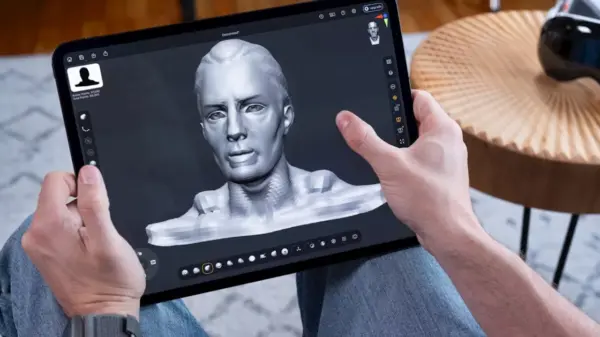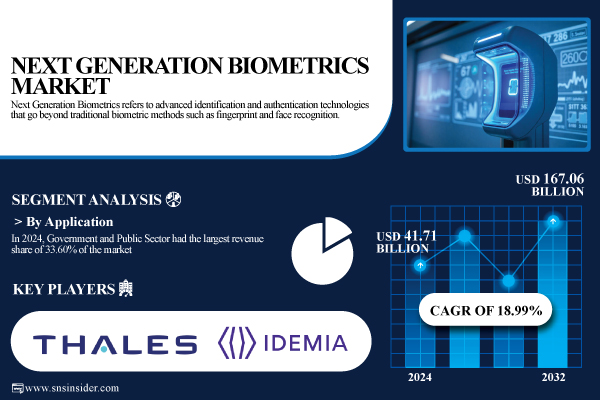The global market for Next Generation Biometrics is poised for significant growth, with projections indicating an increase from USD 41.71 billion in 2024 to USD 167.06 billion by 2032. This represents a compound annual growth rate (CAGR) of 18.99% during the forecast period from 2025 to 2032. The surge in demand is largely attributed to the rising need for enhanced security measures across various sectors, including government, banking, and consumer applications.
According to a report by SNS Insider, the advancement of biometric technologies is transforming how identity verification is approached globally. The increasing acceptance of biometrics in consumer devices, enterprise authentication, and financial technology applications underscores this trend. Enhanced security and contactless authentication are becoming essential as organizations seek to mitigate identity fraud, which biometric systems are estimated to reduce by over 50% compared to traditional methods.
Market Dynamics and Regional Insights
In the United States, the market for Next Generation Biometrics is anticipated to reach USD 37.36 billion by 2032. This growth is driven by national security initiatives, border control implementations, and early adoption within banking and healthcare sectors. The trend of integrating biometric authentication into consumer devices is also notable, with approximately 65% of financial technology applications now offering biometric login options.
The report highlights that fingerprint recognition dominated the market in 2024, holding a 34.20% share. This technology is widely used in mobile devices, government identification programs, ATMs, and access control systems. Meanwhile, facial recognition is projected to experience the highest growth rate, at 20.21% CAGR through 2032, due to its speed and efficiency in applications such as public safety, banking, and retail.
In terms of application, the government and public sector led the market in 2024, capturing a 33.60% share. This segment is bolstered by large-scale deployments aimed at enhancing national security, law enforcement, and civil administration. The National ID Programs segment is expected to expand rapidly, with a projected CAGR of 20.59%, as many governments in Asia, Africa, and Latin America embrace digital identity initiatives.
Technological Advancements and Leading Players
The Next Generation Biometrics market is also shaped by various deployment models. In 2024, on-premise solutions accounted for a 24.60% share, favored for use in secure environments such as government and defense sectors. Conversely, cloud-based solutions are forecasted to grow the fastest with a CAGR of 21.95%, driven by their scalability and cost-effectiveness. Biometric-as-a-service platforms are emerging as a crucial factor in accelerating cloud adoption across industries like banking and telecommunications.
Key players in the biometrics market include Thales Group, IDEMIA, NEC Corporation, ASSA ABLOY, and Fujitsu Limited, among others. These companies are leading the way in developing innovative biometric solutions that enhance security and streamline user experience.
The regional landscape reveals that North America held the largest share of the Next Generation Biometrics market in 2024, accounting for 31.80% of total revenue. This dominance is attributed to robust government investments in homeland security and the rapid adoption of biometric technologies in various sectors. The Asia Pacific region is expected to see the fastest growth, with a CAGR of 19.92%, fueled by digital transformation and high mobile penetration rates across countries like India and China.
As industries continue to evolve, the Next Generation Biometrics market stands at the forefront of innovation, offering solutions that not only enhance security but also promote efficiency and user convenience. The ongoing advancements in biometric technologies and their applications suggest a promising future for this dynamic market.






































































